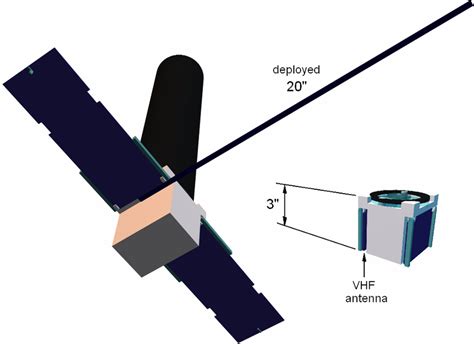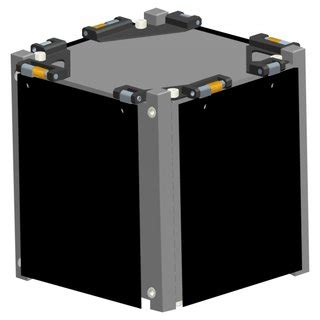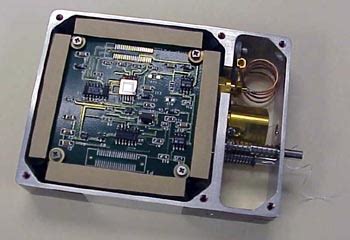Introduction to Picosatellite Power Integrity
Picosatellites, also known as CubeSats, have revolutionized the space industry by providing a cost-effective and efficient way to conduct scientific research, technology demonstrations, and educational projects in space. These small satellites, typically measuring 10 cm x 10 cm x 10 cm and weighing less than 1.33 kg, have gained popularity among universities, research institutions, and even commercial entities.
However, designing and building picosatellites comes with its own set of challenges, particularly in terms of power integrity. Power integrity refers to the quality and stability of the power supply system, which is crucial for ensuring the reliable operation of the satellite’s various subsystems, such as communication, navigation, and payload instruments.
Importance of Power Integrity in Picosatellites
Maintaining power integrity in picosatellites is essential for several reasons:
-
Limited power budget: Picosatellites have a limited power budget due to their small size and restricted solar panel area. Efficient power management and distribution are critical to ensure that all subsystems receive adequate power to function properly.
-
Harsh space environment: Picosatellites operate in the harsh space environment, exposed to extreme temperatures, radiation, and vacuum conditions. The power supply system must be designed to withstand these challenges and provide reliable power throughout the mission.
-
Mission success: The success of a picosatellite mission heavily depends on the reliability of its subsystems, including the power supply system. Any power-related issues can lead to mission failures or reduced performance, compromising the scientific or technological objectives of the mission.
Challenges in Picosatellite Power Integrity
Designing and implementing a robust power supply system for picosatellites presents several challenges:
Limited Space and Weight
The small form factor of picosatellites imposes constraints on the size and weight of the power supply components, such as solar panels, batteries, and power conditioning units. Engineers must optimize the design to maximize power generation and storage while minimizing the physical footprint and mass of the system.
Thermal Management
Picosatellites experience extreme temperature variations during their orbit, ranging from -40°C to +85°C. The power supply components, especially batteries, are sensitive to temperature fluctuations and require proper thermal management to maintain their performance and longevity. Thermal design considerations, such as heat sinks, insulation, and thermal interface materials, must be incorporated to regulate the temperature of the power supply system.
Radiation Effects
The space environment exposes picosatellites to high levels of radiation, including cosmic rays and solar wind. Radiation can cause single-event effects (SEEs) and long-term degradation of electronic components, including those in the power supply system. Radiation-hardened components, shielding techniques, and fault-tolerant designs are necessary to mitigate the impact of radiation on the power supply system.
Voltage Regulation and Distribution
Picosatellites typically have multiple subsystems with different voltage and current requirements. The power supply system must incorporate voltage regulation and distribution mechanisms to provide stable and appropriate power levels to each subsystem. This involves the use of voltage regulators, converters, and power switches to manage the power flow and ensure proper voltage levels across the satellite.

Simulation Tools for Picosatellite Power Integrity Analysis
To address the challenges of picosatellite power integrity, engineers rely on simulation tools to analyze, optimize, and validate the power supply system design. These tools help in predicting the performance of the power supply system under various operating conditions and identifying potential issues before the actual hardware integration.
SPICE-based Simulation Tools
SPICE (Simulation Program with Integrated Circuit Emphasis) is a widely used simulation tool for electronic circuit analysis. SPICE-based tools, such as LTspice, PSpice, and OrCAD, allow engineers to model and simulate the behavior of the power supply components, including solar cells, batteries, and voltage regulators. These tools help in analyzing the transient response, steady-state performance, and power efficiency of the power supply system.
System-level Simulation Tools
System-level simulation tools, such as Matlab/Simulink and LabVIEW, provide a higher-level abstraction for modeling and simulating the entire picosatellite system, including the power supply subsystem. These tools allow engineers to integrate the power supply model with other subsystem models, such as attitude control, communication, and payload, to evaluate the overall system performance and power budget.
Finite Element Analysis (FEA) Tools
FEA tools, such as ANSYS and COMSOL Multiphysics, are used for thermal and structural analysis of the power supply components. These tools help in evaluating the thermal performance of the power supply system, identifying hot spots, and optimizing the thermal management design. FEA tools also assist in assessing the mechanical integrity of the power supply components under launch and in-orbit conditions.

Best Practices for Picosatellite Power Integrity Design
To ensure the reliability and efficiency of the picosatellite power supply system, engineers should follow best practices in power integrity design:
Redundancy and Fault Tolerance
Incorporating redundancy and fault tolerance in the power supply system design is crucial to mitigate the risk of power-related failures. This can be achieved by using multiple solar panels, batteries, and power conditioning units, along with appropriate switching and control mechanisms. Fault detection and isolation techniques should be implemented to identify and isolate faulty components, ensuring the continuity of power supply to critical subsystems.
Efficient Power Management
Efficient power management is essential to maximize the utilization of the limited power budget in picosatellites. This involves implementing power-saving techniques, such as duty cycling, sleep modes, and dynamic power management, to reduce the power consumption of subsystems during non-critical periods. Power management algorithms should be developed to optimize the power allocation based on the mission requirements and operating conditions.
Robust Grounding and Shielding
Proper grounding and shielding techniques are essential to maintain the power integrity and mitigate electromagnetic interference (EMI) in picosatellites. The power supply system should have a well-defined grounding scheme, with separate ground planes for analog and digital circuits. Shielding of sensitive components, such as power converters and regulators, should be implemented to reduce the impact of EMI on the power supply performance.
Thorough Testing and Validation
Comprehensive testing and validation of the power supply system are critical to ensure its reliability and performance in the space environment. This includes functional testing, environmental testing (thermal vacuum, vibration, and radiation), and integration testing with other subsystems. Testing should be performed at the component, subsystem, and system levels to identify and rectify any issues before the launch.

FAQs
-
Q: What are the typical power generation and storage technologies used in picosatellites?
A: Picosatellites commonly use solar panels for power generation and lithium-ion batteries for power storage. Solar panels convert sunlight into electrical energy, while batteries store the energy for use during eclipse periods or peak power demands. -
Q: How do picosatellites manage power during eclipse periods?
A: During eclipse periods, when the satellite is in the Earth’s shadow, picosatellites rely on their battery storage to provide power to the subsystems. The batteries are charged during the sunlit portions of the orbit using the excess power generated by the solar panels. -
Q: What is the role of power conditioning units in picosatellites?
A: Power conditioning units in picosatellites are responsible for regulating and distributing the power from the solar panels and batteries to the various subsystems. They include voltage regulators, converters, and power switches that ensure each subsystem receives the appropriate voltage and current levels. -
Q: How do engineers ensure the power supply system can withstand the harsh space environment?
A: Engineers use radiation-hardened components, shielding techniques, and fault-tolerant designs to protect the power supply system from the effects of radiation, extreme temperatures, and vacuum conditions in space. Thorough testing and validation are performed to verify the system’s resilience to the space environment. -
Q: What are the advantages of using simulation tools for picosatellite power integrity analysis?
A: Simulation tools allow engineers to model and analyze the performance of the power supply system under various operating conditions, identify potential issues, and optimize the design before hardware integration. They help in reducing development time, cost, and risk by enabling Virtual Prototyping and early detection of power integrity problems.
Conclusion
Power integrity is a critical aspect of picosatellite design, as it directly impacts the reliability and performance of the satellite’s subsystems. Engineers face challenges such as limited space and weight, thermal management, radiation effects, and voltage regulation when designing the power supply system for picosatellites.
To overcome these challenges, engineers rely on simulation tools, such as SPICE-based tools, system-level simulation tools, and FEA tools, to analyze and optimize the power supply system design. Following best practices, including redundancy, efficient power management, robust grounding and shielding, and thorough testing, is essential to ensure the power integrity of picosatellites.
As the demand for picosatellites continues to grow, advancements in power generation, storage, and management technologies, along with the development of more sophisticated simulation tools, will play a crucial role in enhancing the power integrity and overall performance of these small satellites. By addressing the power integrity challenges, picosatellites will continue to enable innovative space missions and contribute to the advancement of space technology.

No responses yet